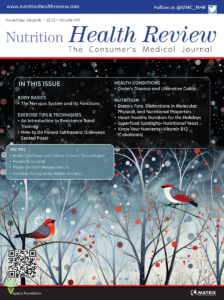Food marketing in recent years has expanded to focus on seemingly healthier options such as salads, smoothies, and parfaits. However, a recent study1 from February 2019 suggests that fast food menus, as a whole, have become less healthy over time. An analysis published in the Journal of the Academy of Nutrition and Dietetics took a look at the nutritional value of fast food offerings according to records from the years in 1986, 1991, and 2016. The researchers found that fast-food entrees, sides, and desserts have increased significantly in calories and sodium over this 30-year period, and entrees and desserts have increased in portion size over this time. In addition, researchers note that our fast food choices have become much more varied over the years, with the total number entrees, desserts, and sides increasing by 226 percent.
With expanding fast food menus and confusing marketing tactics from restaurants and big food companies, it remains a challenge to encourage healthy eating in the modern food environment. This can be especially difficult among adolescents, who begin to assert their autonomy by insisting that they make their own choices, including food choices in the school cafeteria, at the movie theater concession stand, and the local convenience store. Attempts by adults to discourage the freedom to choose a bag of chips and a soda over water and an apple can be perceived by adolescents as an encroachment on their autonomy, leading to a backlash and little progress.2 However, new research suggests that reframing an adolescent’s food choice through the lens of autonomy-obstructing food marketing can encourage adolescents to make healthier choices all on their own.
A preliminary study3 conducted by researchers from the University of Chicago Booth School of Business and the University of Texas took place at a middle school in Texas in 2016. The researchers visited eighth-grade classrooms at the school and asked one group of students to read an evidence- based article about advertising practices of large food companies, including some examples of deceptive or manipulative instances of food marketing tactics that highlighted the addictive nature of junk food. A control group of students were given traditional educational materials that discussed the benefits of healthy eating. The following day, researchers observed the students at lunch. The students who read the food marketing article chose fewer junk food snacks and less soda than the students in the control group.
The study was recently repeated with a new group of eighth graders, this time with an additional activity that tasked the students with modifying junk food ads to better align with the reality of how these unhealthy snacks affect the body.4 The researchers observed the same drop in junk food purchases as they did in the previous study. Notably, the boys who completed the food marketing activity decreased their daily purchases of unhealthy drinks and snacks in the school cafeteria by 31 percent in that time period, compared with the control group. In addition, this decrease in junk food purchases endured for the remaining three months of the school year.
This research reframed the question of how to motivate teens to eat better by discarding the initial assumption that teenagers will be motivated by the idea of long-term health. Instead, the researchers point to previous research that proposed adolescent behavior is largely motivated by living up to current values that are shared by their peers.5 These current values, explain the researchers, include autonomy and social justice.
The authors discuss how adolescents are extremely sensitive towards anything that they perceive to be an “encroachment on their autonomy.” By educating teens on the autonomy-tampering combination
of food marketing tactics and the physiologically addictive nature of salty, sugary, fatty junk food, this research suggests that teens will be willing to choose healthier food in order to reassert their autonomy over these food companies.
Parents—Instead of positioning yourself as the domineering adult encroaching on your teenager’s freedom of choice to eat potato chips and drink soda, pair your efforts at nutritional education with a primer in food marketing tactics and how these companies work to influence adolescent behavior.
SOURCES
1. Fast-Food Offerings in the United States in 1986, 1991, and 2016 Show Large Increases in Food Variety, Portion Size, Dietary Energy, and Selected Micronutrients. J Acad Nutr Diet. 2019 Jun;119(6):923–933.
2. Crone EA, Dahl RE. Understanding adolescence as
a period of social-affective engagement and goal flexibility. Nat Rev Neurosci. 2012 Sep;13(9):636–50.
3. Bryan CJ, Yeager DS, Hinojosa CP, et al. Harnessing adolescent values to motivate healthier eating. Proc Natl Acad Sci USA. 2016 Sep 27;113(39):10830–5.
4. Bryan CJ, Yeager DS, Hinojosa CP. A values-alignment intervention protects adolescents from the effects of food marketing. Nat Hum Behav. 2019 Apr 15. doi: 10.1038/s41562-019-0586-6. [Epub ahead of print] 5. Crone EA, Dahl RE. Understanding adolescence as a period of social-affective engagement and goal flexibility. Nat Rev Neurosci. 2012 Sep;13(9): 636–650. N





